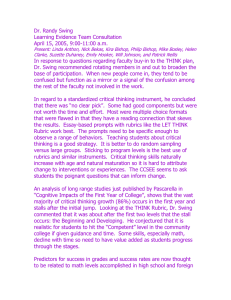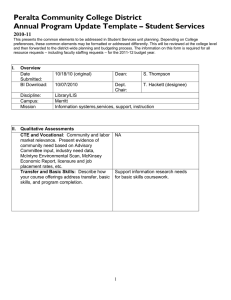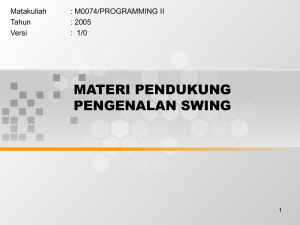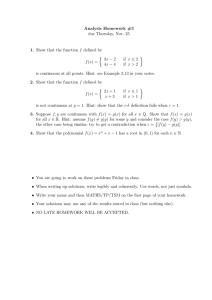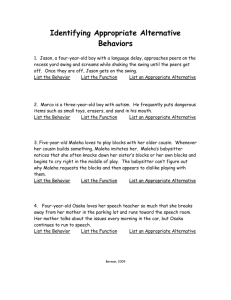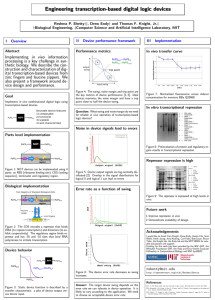TEXAS A&M UNIVERSITY DEPARTMENT OF MATHEMATICS MATH 308-200
advertisement
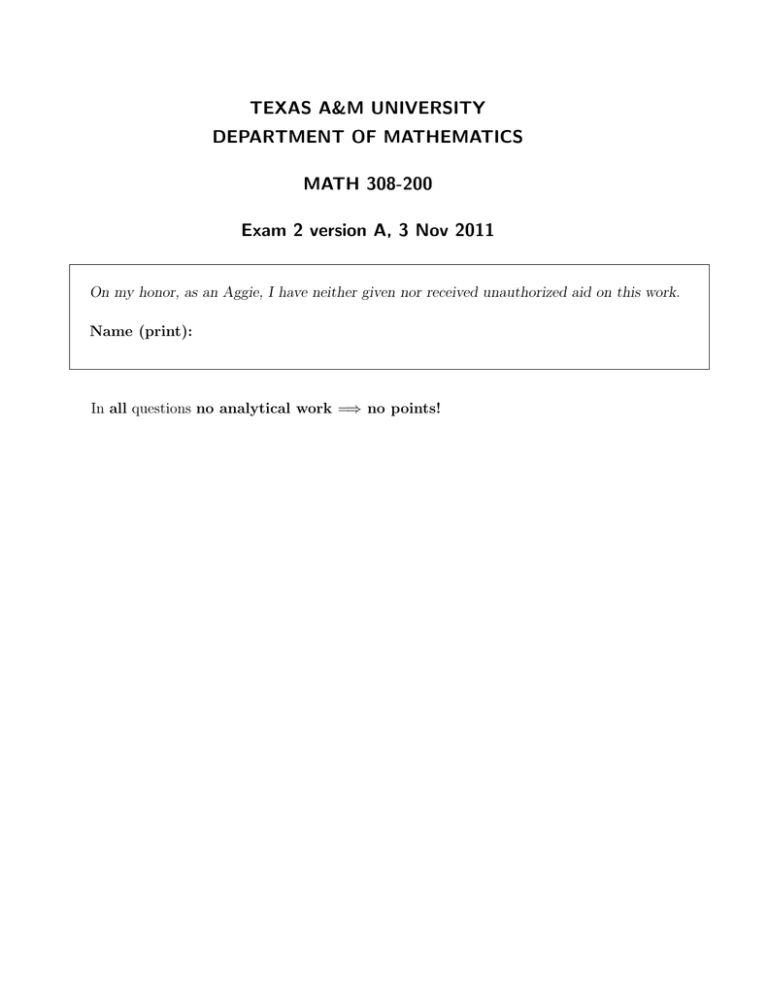
TEXAS A&M UNIVERSITY DEPARTMENT OF MATHEMATICS MATH 308-200 Exam 2 version A, 3 Nov 2011 On my honor, as an Aggie, I have neither given nor received unauthorized aid on this work. Name (print): In all questions no analytical work =⇒ no points! 1. (a) We defined the fundamental solution as yf (t) = L −1 1 2 as + bs + c . Show that it can also be defined as the solution of ay ′′ + by ′ + cy = δ(t), y(0) = y ′ (0) = 0. (1) (Hint: solve eq. (1) by Laplace transform) (b) In the homework we saw that equation (1) is equivalent to the equation ay ′′ + by ′ + cy = 0, y(0) = 0, y ′ (0) = 1/a. (2) Find the fundamental solution by solving (2) when the roots of the characteristic equation are (i) complex, r = λ ± iω, (ii) real and equal. 2. Find a particular solution to et . 1 + t2 (Hint: You can use the fundamental solution derived in 1(b)(ii) above.) y ′′ − 2y ′ + y = 3. We will model the movement of a park swing by the linear equation mθ′′ + γθ′ + kθ = F (t), (3) where θ(t) is the declination from the vertical. Assume the system is under-damped: γ 2 < 4km. Suppose your movements on the swing create the periodic force F (t) = F0 sin(ω0 t) p with the frequency ω0 = k/m. p (a) Find the steady state solution. (Hint: because ω0 = k/m things simplify) (b) What is the phase shift of the solution with respect to the forcing? What is the position and direction of movement of the swing at the time when the force is maximal? When the force is zero? (c) Draw yourself on the swing to illustrate your previous answer. 4. You decide that the forcing you create on the swing is better modeled by a series of impulses, ∞ X 2π n , δ t− F (t) = F1 ω n=0 (4) which happen with frequency ω, where ω now is the imaginary part of the solution r = λ±iω of the characteristic equation mr2 + γr + k = 0. (a) Find λ and ω in terms of m, γ and k. (b) Find the solution of the swing equation (3) with the forcing (4) and zero initial conditions in terms of t, λ, ω and N (t) — the number of kicks before the time t. (Hint: Use the fundamental solution from 1(b)(i)) (c) (Bonus: + 2 pnts) By expressing time t as t= 2π N + ∆t, ω 0 ≤ ∆t ≤ 2π , ω where ∆t is the time elapsed since the last kick, and summing the geometric series, show that the steady state solution is y(t) = F1 sin(ωt) eλ∆t . mω 1 − e2πλ/ω Points: /20


